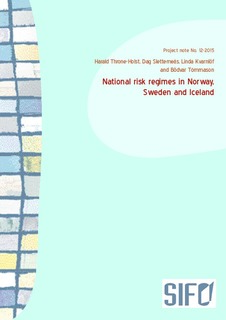| dc.description.abstract | This position paper is a deliverable from the first work package, WP 1 National risk regimes: The role of citizens, of the
HomeRisk-project. The main aim of work package 1 is to identify the expectations and responsibilities of citizens in national
risk plans in the three participating countries Norway, Sweden and Iceland. The basis for this report is the three National reports on this matter from the main partner in each country; SIFO (Norway), Mid Sweden University (Sweden) and University of Iceland (Iceland). The three reports are presented as individual chapters in this report. First, we briefly describe the three national risk regimes in these countries, and then we present and discuss how actors such as households, citizens and consumers are understood in them. Based on these reports, we find that the three countries have much in common. First of all, that there actually are a number of plans and laws in place. Further, that all three national governments have built up and sustain national and regional capabilities in case of emergencies. Within the scope of the HomeRisk-project, we have studied three kinds of actors: households, citizens and consumers. We note that households are hardly mentioned in any of the national plans or laws. It is citizens or the general public that it is referred to. With regard to consumers, we note that the general public only is referred to in this role, when it comes to ICT fallouts. This in contrast to electricity fallouts, where it appears that the general public is framed as citizens, rather than as consumers. There are of course differences between the countries as well, one of them is that there is more of an implicit expectation that Norwegian public authorities will step in if crises occur. In Sweden, The Law on Protection against Accidents (‘Lag om skydd mot olyckor’), specifies that (only) for individuals who are not able to handle an event, then the public authorities are obliged to help. Whereas in Iceland, the implicit expectation is that households should be (must be) able to handle crisis on their own. | en |
